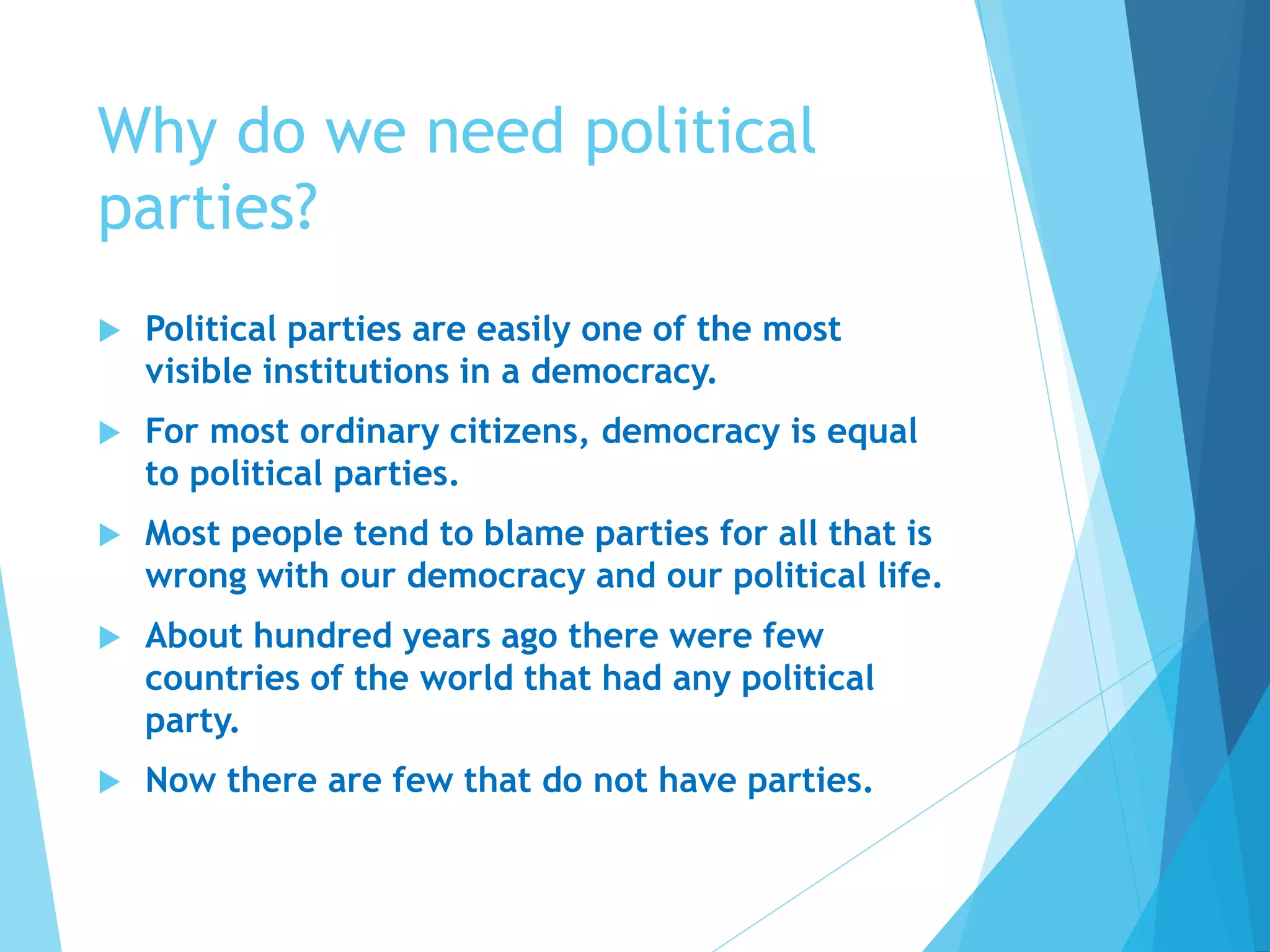Political parties are essential for democracy, assisting in elections, policymaking, law-making, and representing public opinion. They consist of leaders, active members, and followers, and can be classified into national and state parties, with various recognized parties in India. Challenges such as internal democracy issues, dynastic succession, money power, and a lack of meaningful choices highlight the need for political reform to enhance accountability and representation.


















































